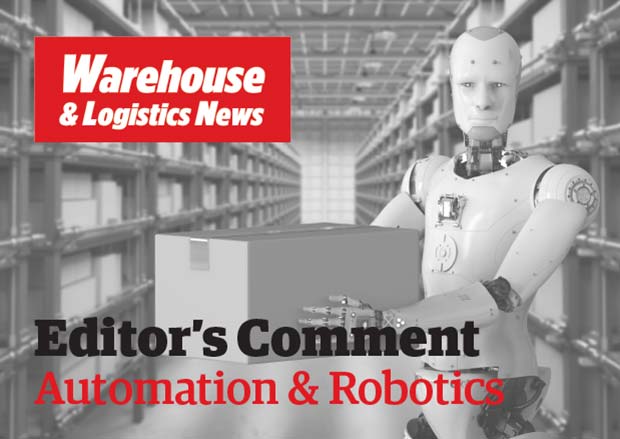Warehouses have been under pressure in recent years to meet the demand created by the rise in e-commerce. The warehouse sector has therefore become more reliant on automation and robotics in order to keep up with this demand.
This article was first published in the October 15th 2021 issue of Warehouse & Logistics News, subscribe to the magazine by clicking here.
 Well done to Toyota, whose advanced Radioshuttle solution helped McKeown Fine Foods maximise storage density and ensure fast, reliable throughput at its new cold store facility in Northern Ireland. The Radioshuttle system is designed to automatically store and retrieve pallet loads of product at rates of up to 60 per hour, combining fast and efficient transport of goods with space utilisation of up to 85% of available storage space.
Well done to Toyota, whose advanced Radioshuttle solution helped McKeown Fine Foods maximise storage density and ensure fast, reliable throughput at its new cold store facility in Northern Ireland. The Radioshuttle system is designed to automatically store and retrieve pallet loads of product at rates of up to 60 per hour, combining fast and efficient transport of goods with space utilisation of up to 85% of available storage space.
The system uses radio-controlled shuttles that are automatically guided along channels within the racking and powered by lithium ion batteries for reliable long-shift operations.
Congratulations to Vanderlande which has signed a contract with global footwear brand Crocs to deliver FASTPICK, a state-of-the-art goods-to-person (GtP) system incorporating ADAPTO technology.
Vanderlande’s ADAPTO, an automated storage and retrieval system (AS/RS), will be central to the operation in Dordrecht and enables efficient and fast delivery to both stores (B2B) and consumers (B2C). ADAPTO offers Crocs the capacity to simultaneously store up to 16,000 SKUs across 54,000 locations.
ELOKON is pleased to announce that it has invested in the Munich based start-up Filics, which has developed an innovative autonomous transport robot. The Filics concept is based on two mechanically unconnected skid units which drive independently into Europallets to lift and transport the load directly to wherever it is needed in a safe and digitally controllable manner. The system will transform existing handling procedures and enable the creation of completely new ones – from classic load transportation to efficient and fully automated floor storage.
SICK’s Tim1 and Tim2 2D LiDAR sensors have been developed with simplicity and economy in mind to enable rapid set-up of area monitoring, presence detection and collision avoidance even in the smallest of machine spaces. Weighing just 90 g, and with a power consumption as low as 2.2 W, the SICK Tim1 and Tim2 are particularly well suited for collision avoidance duties on small, low-budget automated mobile robots (AMRs). The SICK Tim 1 and Tim 2 are also ideal, reliable low-cost detection devices to monitor the entire width of warehouse storage bays during loading and unloading, making it easier to detect the presence of packages of various shapes and sizes than when using a single-beam distance sensor.
The technology innovators must be applauded for bringing automated machines to the market, thus helping warehouses meet the increased demand generated by e-commerce.
George Simpson
Features Editor




Comments are closed.